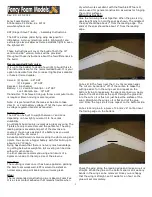
Pilot Operating Handbook for the C42 Series
POH C42 SERIES ISSUE1 (B) REV7 25/04/2020
Page 25 of 73
4.4 Turn in Flight
Turns are coordinated using the aileron and rudders. With the increase of
airspeed, significantly less amount of rudder deflection is needed.
Banks of 45° degrees or more are not recommended, a banking angle of
more than 60 degrees is prohibited. In steep banks keep the nose and
airspeed under control by means of the rudders and elevator.
4.5 Stall
In cruising flight configuration (flap position I), the stalling speed is 75
km/h (39 kts). The engine cowling will be well above the horizon. At
approximately 80 km/h (43 kts) there will be a slight buffeting of the
airframe. When flown in this condition the aircraft is fully controllable.
However, lateral altitude corrections must be done mainly with the rudder.
Example: right wing low
à
rudder deflection to the left.
If the aircraft is stalled slowly with the elevator in detent, it will enter into a
stable stalled descent. Altitude loss can be up to 100 ft (30 m).
During a whip stall, the aircraft clearly pitches down (up to 40°). By
slightly releasing the elevator, airspeed will increase and the aircraft will
return to horizontal flight. Maximum altitude loss is 250 ft (75 m).
The aircraft reacts similarly in all flap positions.
Stall speeds for the various flap positions at a take-off weight: 472.5kg
(1042 lbs):
V
s
flap position I (cruising flight)
ca. 75 km/h (40 kts)
V
s1
flap position II (take-off/landing)
ca. 70km/h (38 kts)
V
s0
flap position III (landing)
ca. 65 km/h (35 kts)
The stall speeds above will be affected by variations in take-off weights.
















































